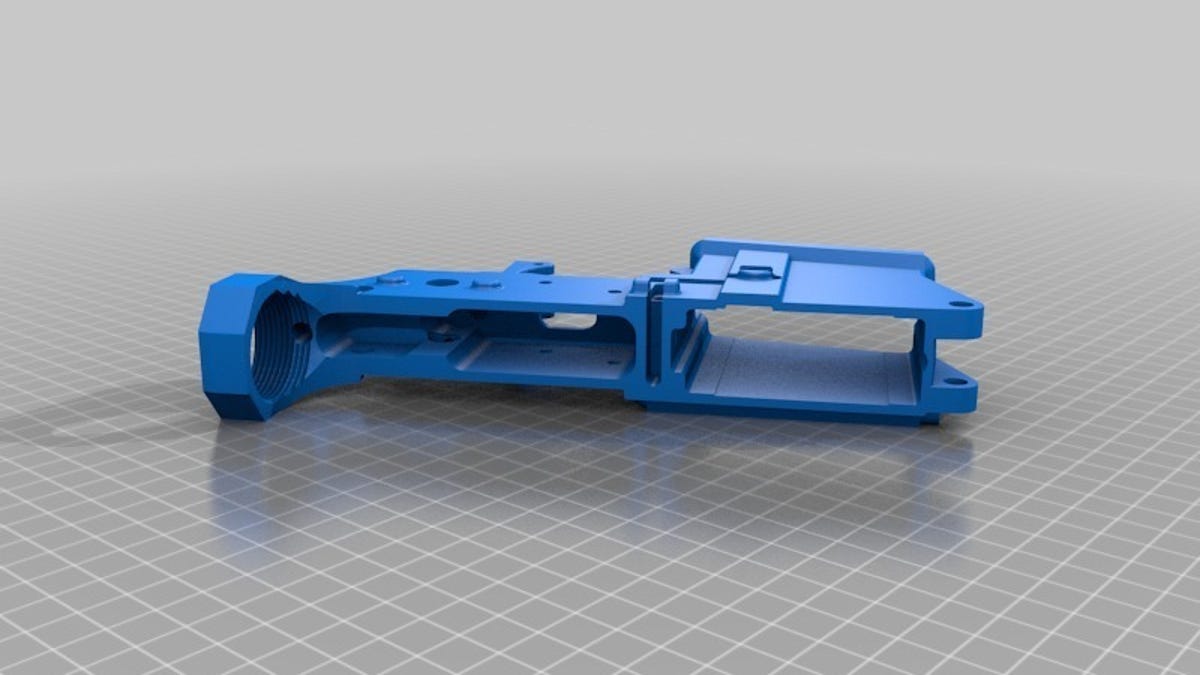Which 3D-printing service will make you a gun?
After looking into the current state of 3D-printed gun-making, CNET's Rich Brown asked the various 3D-printing services about their policies toward printing firearms and firearm components.

As I explored in this post, while it's possible to print a working firearm component with a 3D printer, it's not exactly the best way to create such a component. Still, more people might experiment with the idea as 3D printers become more common. And as 3D-printing technology develops alongside that growth, so will the popularity of 3D-printing services--companies that print objects for you based on plans you submit.
I contacted each of the below vendors asking them about their policies in regard to printing guns or gun components, and whether they will print either if a customer submits a design.
i.materialise (Leuven, Belgium), via customer support:
The fact is that i.materialise is one of the services of Materialise, a company that is a world leader in Additive Manufacturing (3D Printing). Materialise acts according to its mission. Our aim as a company is to make the world a better and healthier place to live.So, we don't print models that are in conflict with our mission and value statement. Therefore creating firearms, their components, or any other models intended for the weapons industry or models for which we have ethical concerns, like skimming devices, are rejected to be quoted or produced.
Ponoko (various locations worldwide), via a representative:
We currently wouldn't prevent anyone from using our service to create firearm components, for a couple of key reasons:1. Our service is provided in good faith that our customers will be using their product in a lawful manner (as outlined under "General Responsibilities" in our Terms of Use).
2. We're not gunsmiths -- these types of components come in a wide variety of shapes and sizes, and it's very unlikely we would know such a part if we saw it.
Our services could not currently be solely used to create a firearm without additional manufacturing processes. We'll be keeping a very close eye on the debate and discussion in this area and will continue to review our policies.
Sculpteo (Paris), via CEO Clement Moreau:
No we don't print firearms. We receive these kind of inquiries from time to time but we don't print objects which could be a firearm or a model of a firearm. We agree to print objects as long as there is no way it could be confused with a real firearm or be used as one (a small scale mock-up for example).
Shapeways (New York and Eindhoven, the Netherlands), via a representative:
We do not allow weaponry of any kind to be posted on the site, as outlined in the Content Policy here, following applicable Dutch and U.S. law. Also see our FAQ under Prohibited Items: http://www.shapeways.com/support/faq Explicit sexual content and weaponry or lookalikes are not accepted on Shapeways, neither private, nor public. Any file containing such content will be promptly removed and the designer will be notified. We are allowed to make an exception for miniature weaponry (maximum size 10cm). To host any weaponry on our site, Shapeways would legally need a firearms license, which we do not possess, nor intend to.
3D Systems has not responded regarding the firearms-making policies of its Cubify Cloud Print service. If the company does reply, I will update this post.
I also looked into the availability of plans that can be downloaded and printed on your own 3D printer. MakerBot's Thingiverse.com is the largest site that provides 3D-printing plans, with more than 22,000 plan files available as of this writing. Search "gun" on Thingverse, and you'll turn up 230 designs, some of which are toys. But others, like this AR-15 magazine and this grip extension for a Ruger handgun, are all meant for use with real firearms.
MakerBot would not respond with a direct comment on the issue, but the Thingiverse Terms of Use explicitly outlaw firearm-related uploads. From part 3.3a:
You agree not to use the Site or Services to collect, upload, transmit, display, or distribute any User Content (i) that...contributes to the creation of weapons, illegal materials or is otherwise objectionable;
I pressed MakerBot on this point, and was met with a "no comment," but I was also directed to the next section in the Terms of Use by a MakerBot representative:
3.4 Enforcement. We reserve the right (but have no obligation) to review any User Content, investigate, and/or take appropriate action against you in our sole discretion if you violate the Acceptable Use Policy or any other provision of these Terms of Use or otherwise create liability for us or any other person. Such acts may include removing or modifying your User Content, terminating your Company Account in accordance with Section 8, and/or reporting you to law enforcement authorities.
In other words, MakerBot is selective in how it enforces its ban on firearms-related content. Making such content available for download is not illegal. You can also expect that even if Thingiverse did purge all weapon-related design files, they would be readily available elsewhere on the Internet.
None of this is to say that 3D printing is the best way to make a firearm component. Though you can technically use a consumer-level 3D printer to make working gun parts out of cheap plastic (as proved by Michael "HaveBlue" Guslick and his successful test of a 3D-printed AR 15 lower receiver), as Ryder Washburn, vice president of New York City prop house the Specialists Ltd. told me, "3D printing [a firearm] is an expensive way to make an inferior product."
That equation might change as 3D-printing technology improves. If the Defense Distributed project discussed in this post is successful, however likely that may be, Ponoko might someday do booming business printing gun parts. If it starts manufacturing and shipping regulated gun parts internationally, like the AR 15 receiver is in this country, it might also attract some law enforcement attention.

